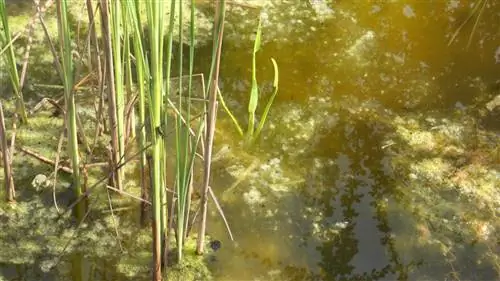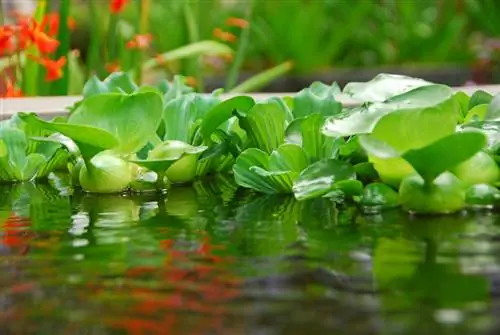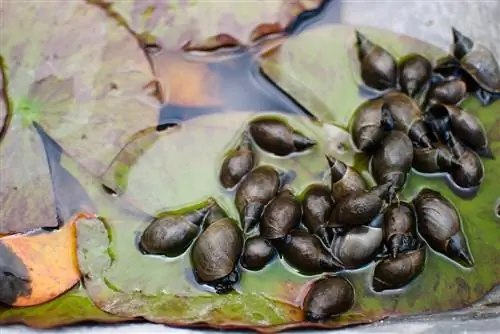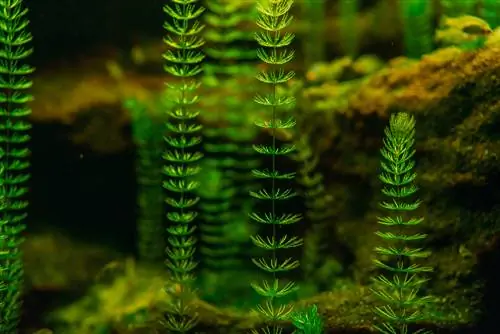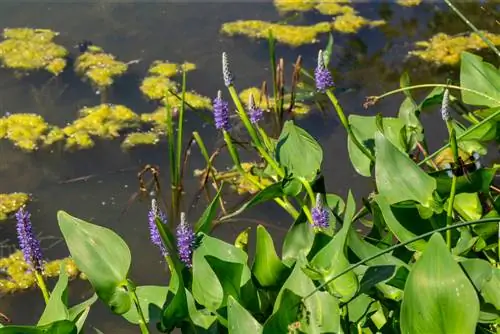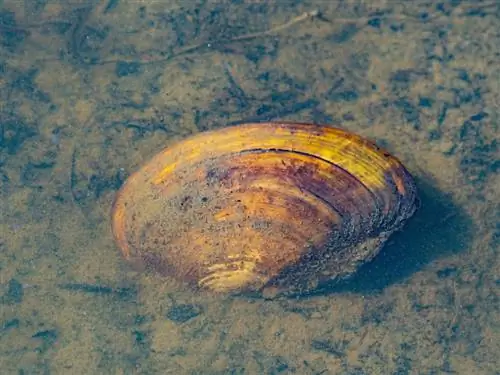- Author admin [email protected].
- Public 2023-12-16 16:46.
- Last modified 2025-06-01 06:02.
Algae in pond water is nothing unusual. However, if it gets out of hand, you should take action. Thread algae or floating algae can particularly annoy pond owners. Find out here how you can use copper effectively against algae in order to combat it sustainably.

Does copper help against algae in the pond?
Coppercan destroy algaein the garden pondsustainablyBoth copper parts such as metal sheets or dishes, as well as copper electrolyzers, which produce an adjustable amount of copper, can help release the water. However, too high a copper concentration can be harmful to fish and molluscs.
How do I properly use copper against algae in the pond?
To combat algae with copper, you can do the following:
- Bend the thinnest possible copper sheet into a tube.
- Grind the pipe. This increases the effect.
- Place the copper pipe at the water inlet of the pond. If you have a large pond, you should use copper in several places.
Alternatively, you can also use a copper electrolyzer. This is connected to the pond pump and releases copper depending on the setting. However, it is more suitable for fountains or decorative fountains.
What should you pay attention to when using copper against algae?
You can prevent algae when setting up your garden pond by installing copper inlet pipes. However, some species of fish and molluscs cannot tolerateincreased copper concentration. Before installing it, find out whether your fish are suitable for it or not. To reduce copper levels that are too high, you can also introduce soft rainwater into the pond. With rainwater you also bring a lot of nutrients into the water. This can in turn promote strong algae growth.
Which copper values are suitable against algae in the pond?
Measure the copper content of the pond water regularly using a suitable water test. The following water values are normal:
- Normal value: less than 0.14 mg/l water (safe for fish, ideal for bacteria, partially attacks algae, complies with drinking water regulations)
- Slightly increased: 0.14 - 2.0 mg/l water (still in the limit range, can already be harmful to sensitive fish, can be regulated relatively easily)
- Increased: more than 2.0 mg/l water (toxic for all pond creatures, not permitted according to the drinking water regulations, water value must be reduced, perhaps only a water change will help)
Is copper harmful to algae?
Copper (Cu) is a heavy metal. However, in the right amount it is beneficial to he alth. For example, the bacteria in the pond filter with copper are much more efficient. However, too much copperin the water is harmful to many pond inhabitantsMollusks such as snails in particular cannot tolerate high copper levels. Certain types of fish such as trout, salmon, goldfish and koi are also sensitive to too much copper in the water.
Tip
Copper sheets in the pond - an old trick
To combat algae, many pond owners put old copper parts (e.g. copper sheets, copper pipes, copper dishes) in the water. It has always been known that copper parts in water can enormously reduce algae growth.

